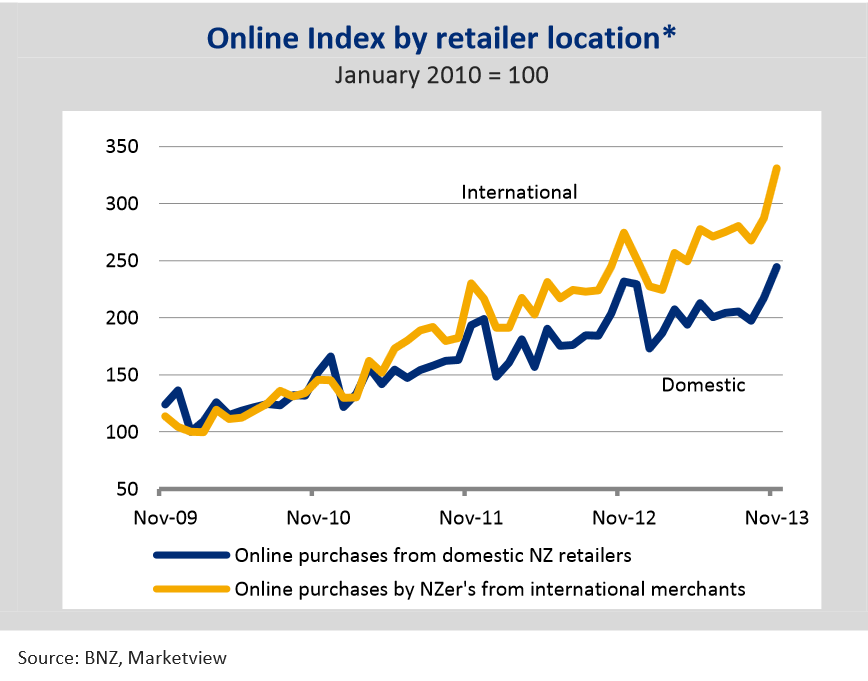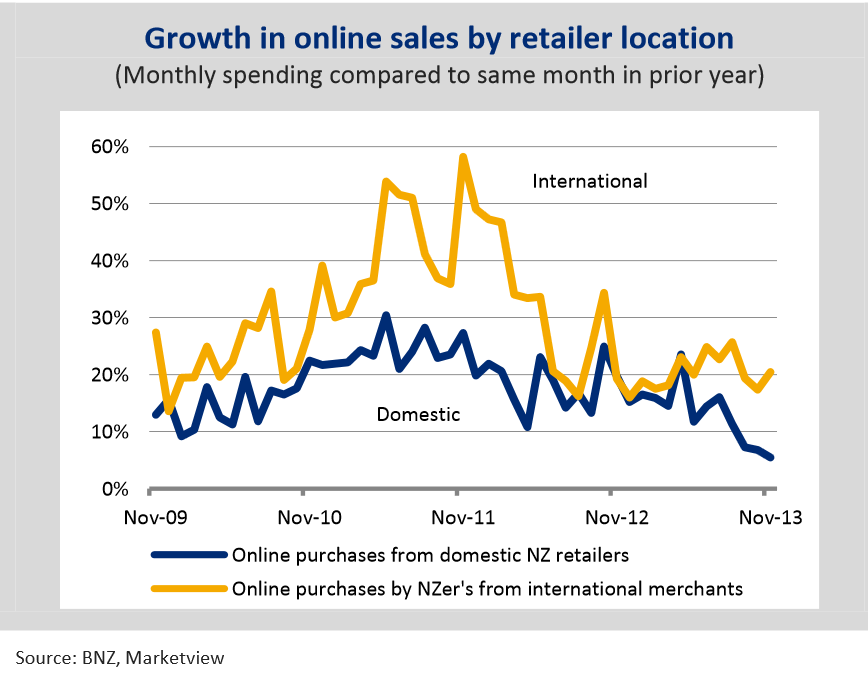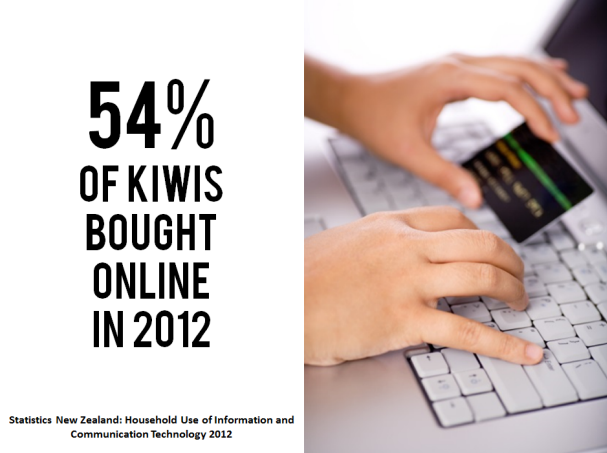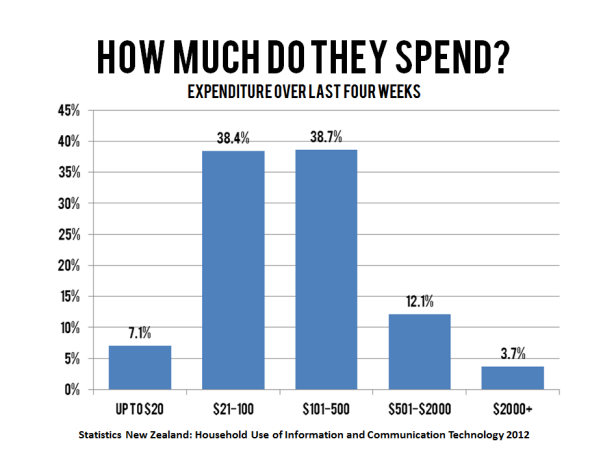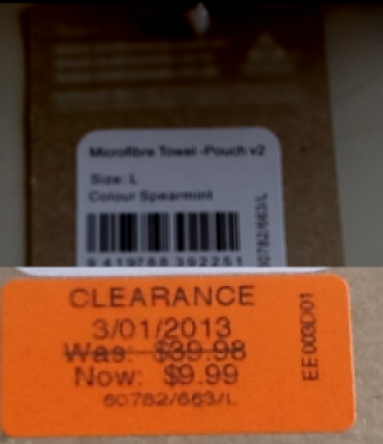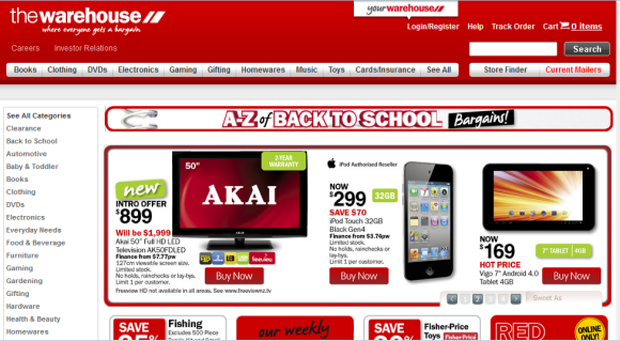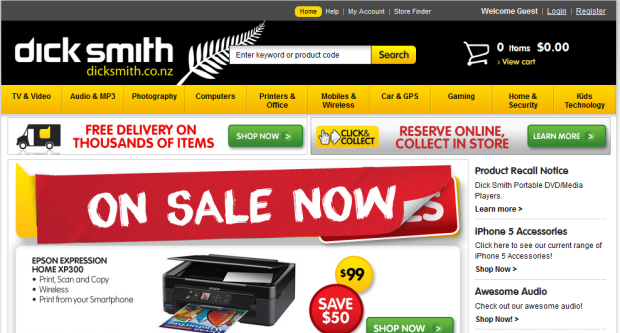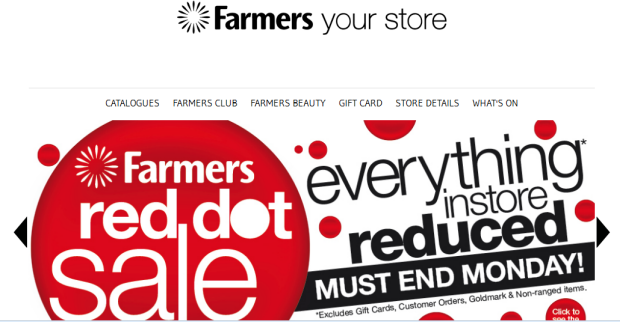The latest BNZ Online Retail Sales Index, covering NZ eCommerce trends up until November 2013, has just been released and it demonstrates just how small the world is — and the heightened risks facing NZ retailers.
The most significant statistic is that online spending by New Zealanders at offshore stores in November 2013 was up approximately 20% on November 2013, while spending in domestic online stores was up just 5.5% (this despite the introduction of several Kiwi online initiatives such as Click Monday and Click Madness).
Whilst we’re not seeing the huge gaps that we saw in 2011 (see the graph below), the trends are clear: Kiwis are spending more online — and are spending more than three times as much online as they were in January 2010.
In which countries are we shopping? Not only in America, as you might have expected. In fact, the US accounts for only 30% of online spending, according to the BNZ’s figures. “Other” (encompassing Asian trading partners such as China, Hong Kong and Singapore) is in second place, followed by the UK, the EU and Australia.
The economic impact on NZ retailers of this trend towards international shopping has been in the news of late, most recently with Hallenstein Glasson chief executive Graeme Popplewell citing “competing with an e-commerce world where profit margins are low or nonexistent” and forecasting a 20 per cent decline in half-year profit.
Steve Waite of accounting firm BDO penned a column carried by the Herald Online arguing that NZ should charge GST at the border on all transactions, not just those over $400. This, he argued, should “give our retailers on Main Street a bit more time to adapt to the brave new world confronting them”.
Unfortunately, those sentiments drew little sympathy with the vast majority of the more than 290 commenters on the article. Typical responses pointed out that there can be vast differences between the cost of products sourced direct from offshore and those sold locally:
The issue is not so much the GST as the massive mark up charged to NZ customers on some goods. If goods were priced competitively compared to overseas people would not bother buying from overseas.
I have just bought a juice pack from the USA for $49. For sale here at $220 dollars. That’s why people buy overseas. In a market economy adapt or get out.
It would take a month at most for a NZ retailer to cut prices to match. They simply need to stop making such high margins. I bought some North Face shoes that cost $250 in NZ and $110 in the USA. No one will convince me that 15% GST and the cost of moving a container of shoes to NZ instead of the USA from Vietnam adds $140 to the price.
Just bought some Levis jeans in Costco in LA. US$19 a pair. Same jeans in NZ? US$135/pair or so. Please explain how adding 15% to $19 will make me stop buying overseas?
The other most commonly-cited reason for buying online: range, quality and variety.
The reason why I buy online is to get better quality of goods as well as specialty items that are not available in NZ shops.
Convenience gets a mention from a few:
It’s not just the pricing that’s attractive to the consumer, it’s the whole package. No driving around in circles trying to find a park, no overworked underpaid disgruntled staff showing you no courtesy or manners (in fact a lot of the stores are understaffed at busy times), no queues, no crowds, no dirty toilets and waiting for a loo.
Compare that to browsing your favourite stores online in the comfort of your own home or office, and having your purchases delivered to your door.
And then there’s customer service (or its perceived absence locally):
I personally don’t care if 95% of NZ retailers go bust because they cannot compete – most of them are next to useless anyway, with very limited stock inventory, slack and uninformed staff and poor warranties/return policies that offer only the legal minimum, combined with ridiculous trading hours that mean they close at 1230 on a Saturday and don’t open Sunday etc.
I’ve been trying to buy an item for a month from a NZ company, have emailed 3 times and no one has bothered to respond, so guess what, I bought it overseas and it arrived within a week.
What about buying locally so that you’re protected if anything goes wrong?
A couple of months ago I purchased a $500 item from a store, instead of for $200 USD overseas, thinking that I would get better after sales service. However, when a part of the item broke last week, I had terrible service from the retailer, who in turn got no service from the importer.
And shipping from local suppliers comes in for criticism as well:
How is it that I can purchase something online from a NZ shop on the same day as something from a US based retailer, and have the US purchase arrive first (by courier)?
A few commenters felt that the real problem is not so much the retailers but rather the various intermediaries that each add their own margins:
Rubbish, people shop online because NZ retailers are forced to pay ridiculous rentals, and have to then gauge extortionate profits, and justify it by saying it is because we are so far away in NZ.
Yet, even single items can be purchased for half the price overseas, online. If they were only 10-15% more expensive, nobody would bother.
The main problem is middlemen, or wholesalers, who have large warehouses, teams of people, and fleets of vehicles that all have to be paid for. In most cases, these wholesalers are making more margin than the retailers.
This middleman structure will disappear in the future, and retailers will all be buying direct, importing their own products. At that stage, we will have retail prices that are consistent with prices charged overseas.
And as for that “a bit more time” comment:
Finally, how long is a “bit more time” for retailers to address their cost structures in relation to on line business – 5 years, 10 years, 20 years, or more? On-line stores like Amazon, iTunes and even New Zealand’s ill fated Flying Pig have been around for many years now – Amazon started in 1994, and will celebrate 20 years next year.
Ultimately, what is being requested is protectionism not an efficient market
All in all, it’s clear that there’s little sympathy for buying locally if the consumer has to settle for higher prices, limited range, poor service and inefficient delivery times. Which explains the continuing appeal for international shopping.
What’s to be done? One commenter made some useful suggestions:
Until retailers (here and offshore) understand that they need to add value to customers, not simply attempt to sell products that will always be available for less somewhere else (whether on Amazon, eBay or even Trade Me), they will continue to lose market share.
There have always been retail establishments that charge more, but we frequent them nevertheless, because they either:
- understand our needs better;
- introduce us to products we never would have thought of buying otherwise;
- have a unique perspective on the world that catches our imagination;
- have mastered retail as shoppertainment;
- curate products, not just sell them;
- provide peace of mind after the sale;
- are really nice people with whom we just like to deal; or
- otherwise distinguish themselves in a world of parity products and retailers.
Food for thought.

